With Finland’s recent joining of NATO, their armed forces add value assets to the alliance. The country’s rotary wing operations form a small but significant component. In this report, we offer a closer, detailed look into the Helicopter Battalion of the Finnish army.
Text and photos: Emiel Sloot
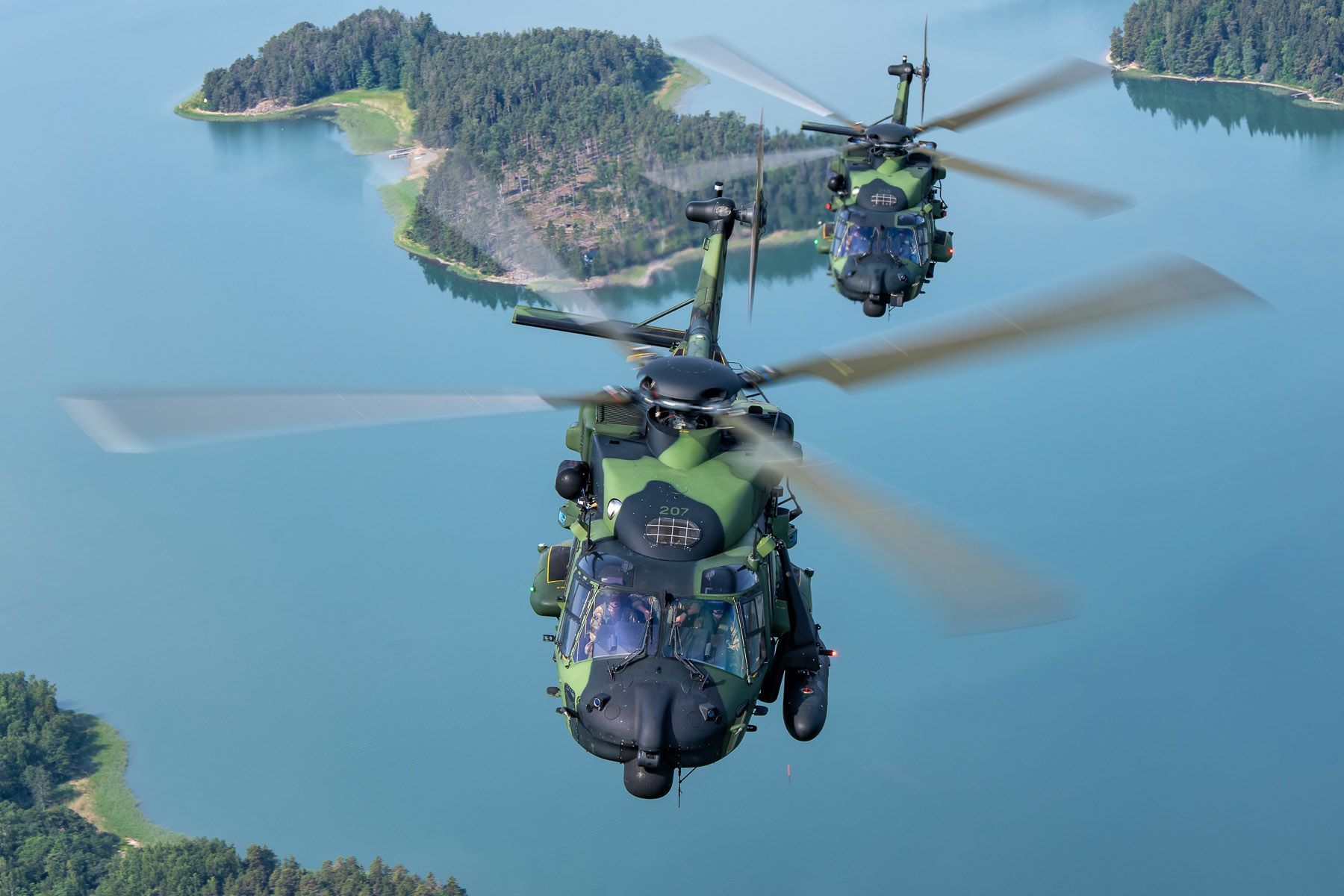
First helicopters
Finnish rotary wing operations have not always been a ground force affair. It all started when the air force acquired a single Bell 47D-1 in 1953. During the Cold War, Finland pursued a strict neutral position, with ties to both the West and the Soviet Union. Thus, acquiring military hardware from the latter was not uncommon by then, and beside MiG-15UTI trainers and MiG-21 fighter aircraft, also Soviet helicopters entered service. Four SM-1 helicopters (Polish-built Mil Mi-1s) were delivered in 1961, followed by three Mi-4s a year later. Two Sud-Est SE3130 Alouette II and a single Bell 206A Jet Ranger were delivered in 1965 and 1968, respectively.
Helicopter operations were modernized and expanded with the arrival of Mi-8 transport helicopters. A total of eight Mi-8T and two Mi-8PS were taken on charge from 1973. Furthermore, several Hughes (later McDonnell-Douglas) 500 helicopters of different subversions arrived, the first three (of twelve in total) joining in 1975. For some two decades, the Mi-8s and H/MD 500s would form the backbone of the Helikopterilentue (Helicopter Squadron) of the Ilmavoimat or Finnish Air Force. This unit was based at Utti, which is some 150 km northeast of Helsinki.
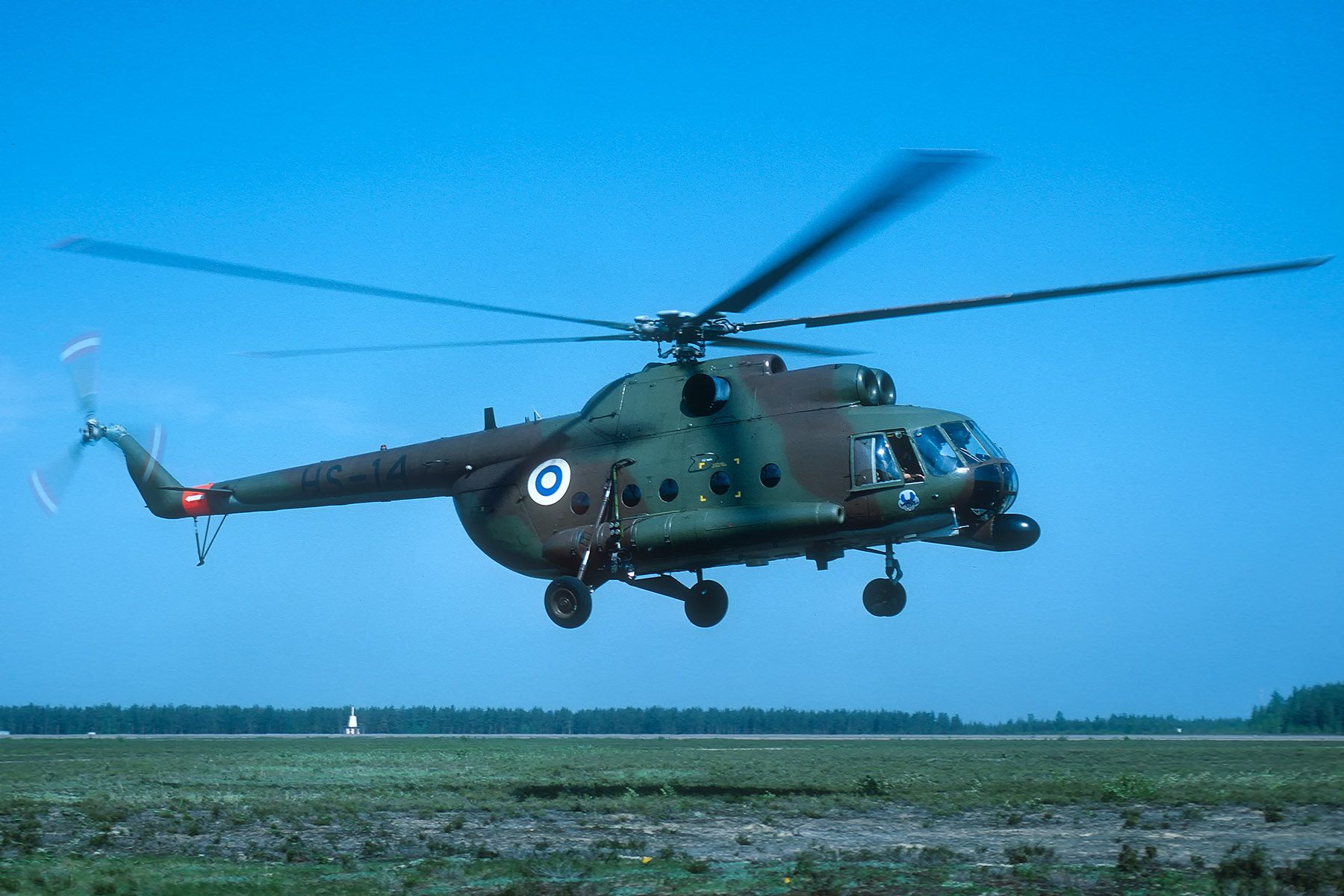
Utti Jaeger Regiment
A reorganization within the Finnish Defence Forces marked the end of rotary wing operations by the air force. On 1 January 1997, the Utti Jaeger Regiment was formed as part of the Maavoimat, the Finnish Army, by merging the Parachute Jaeger School and the Helicopter Squadron, the latter being transformed into the Helikopteripataljoona (Helicopter Battalion) in 2001.
Today, the Utti Jaeger Regiment’s main elements are the Special Jaeger Battalion and the Helicopter Battalion, alongside a Support Battalion. The regiment is home to the Finnish Defence Forces Special Forces Unit.
The Helicopter Battalion cooperates closely with all Finnish Defence Force branches – army, air force and navy – and in addition, they frequently work together with Police and Border Guard units.
The current inventory consists of 20 NH Industries NH90 TTH and seven MD 500 helicopters. A round-the-clock readiness is maintained to use their NH90s to support the mentioned authorities.
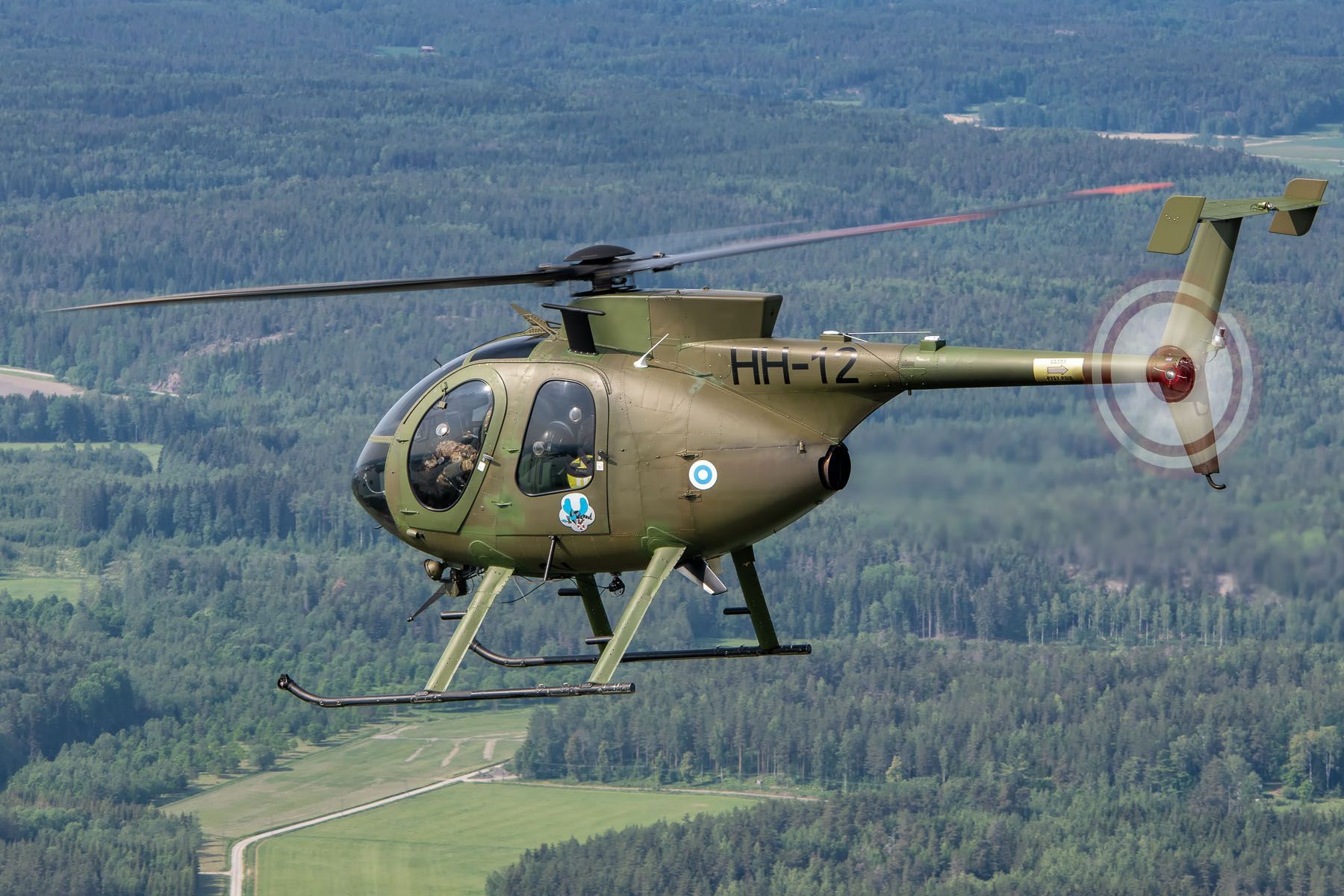
NH90 acquisition
Before describing the daily operations in more detail, let’s have a look first at the two types of helicopters that the Finnish Defence Forces currently rely on.
To enable the Helicopter Battalion to fulfil its future roles following the unit’s establishment, the armed forces required additional and modern equipment. On 19 October 2001, a contract was signed with NH Industries for the delivery of 20 NH90 helicopters as Tactical Troop Transport (TTT – later redesignated into the more common TTH version). These were destined to replace the handful of remaining Mi-8s.
The first NH90 in Finnish colours was built by Eurocopter (now Airbus Helicopters) in Marseille-Marignane, and first flew on 15 September 2004 with Finnish serial NH-201. However, this particular aircraft performed as a company testbed, and actually operated as such until present. One more was completed in France (NH-203), while the remaining 19 (NH-202 and NH-204 to -221) were assembled locally by Patria in Halli, that also constructs several components of the NH90 for other partners in the programme.
Deliveries should have commenced in 2004, but several issues forced this date backward, and the first NH90 (the French-built NH-203) was not handed over until 14 March 2008. In order to get both the aircraft flight and maintenance training started as soon as practicable, Patria delivered the first batch in an Initial Operational Configuration (IOC), followed by some in a Nearly Operational Configuration (IOC+) states. At a later stage, Patria retrofitted the fleet into the Final Operational Configuration (FOC).
In September 2011, the Finnish Defence Forces and Patria signed an agreement to provide ballistic protection for onboard personnel across the NH90 fleet. The last example was delivered on 18 June 2015, and in 2018, the whole fleet reached FOC status.
The helicopters are all configured as TTH (Troop Transport Helicopter). As such, they can carry 20 regular troops or 2,500 kg of cargo, or fitted with up 12 stretchers for casualty evacuation. The NH90s are grouped into the Helicopter Battalion’s 1. and 2. Helikopterikomppannia (1. and 2. HekoK or Helicopter Company).
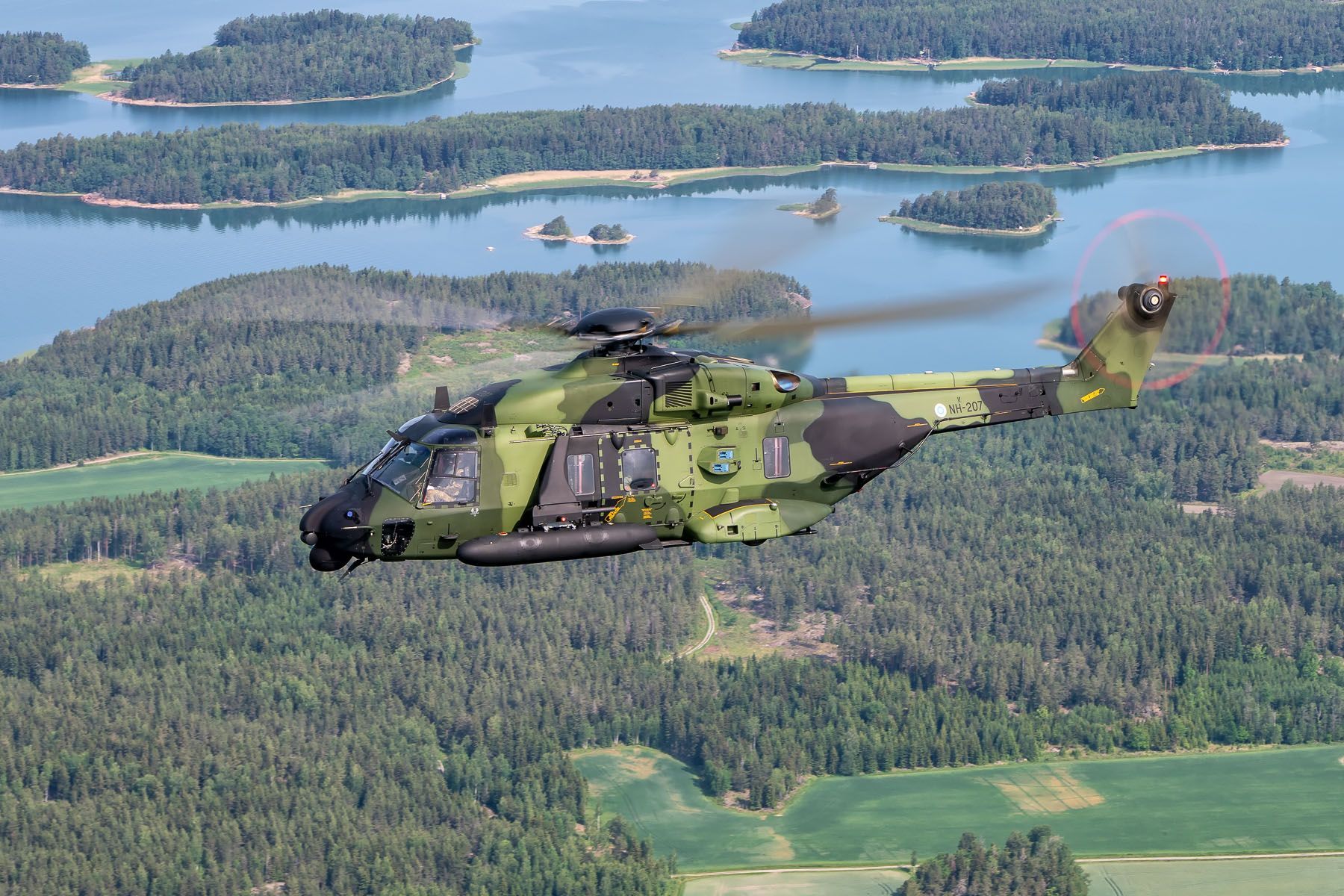
The venerable MD500
Alongside the NH90s, the Helicopter Battalion operates a number of MD 500s. These small, agile helicopters were already used by the unit’s predecessor as part of the Finnish Air Force, but still prove to be very useful. Two older MD 500D (serialled HH-4 and -6) and five MD 500E (HH-7, and HH-9 to -12) are part of the Battalion’s 2. Helikopterikomppannia (2. HekoK).
Recently, an MD 500E was repainted in an all-black colour scheme, as part of an ongoing experiment to investigate the effect of colours on the visibility of the helicopter in Finnish terrain and built-up areas, in different seasons and in different weather and lighting conditions. For similar reasons, a NH90 was temporarily painted partially in a white winter camouflage scheme.
Currently, the MD 500 fleet is undergoing an avionics update, which will significantly increase the operational performance of the helicopters. Following this programme, the MD 500 cockpit will be fitted with an electronic multi-function display, replacing the older flight instruments. Not only will this enable operation with night vision devices, it will also ease the transition of pilots switching from the MD 500 to the NH90.

Battalion business
As the only rotary wing unit within the Finnish Defence Forces, the package of tasks for the Helicopter Battalion is rather wide and diverse. Their primary duties are to work closely with the Finnish Special Operations Forces, and to support alldefence branches in their operations in view of the country’s territorial integrity.
In addition, helicopters support other security authorities, such as police and rescue services, when their respectiveresources are insufficient. Examples are law enforcing, anti-terrorist and general security operations. Furthermore, the unit can take part in international military crisis management.
For the bulk of these encounters, the NH90 is the preferred tool. It enables the rapid transport of troops and material throughout the country as well as usage in other tactical operations in all weather and lighting conditions. For delivering troops, the NH90 is suitable for fast roping, para dropping and static line parachute jumps.
Focusing on Special Operation Forces, an example of an intervention involving NH90s is a so-called VBSS-mission (visit, board, search, and seizure), that combine transportation and fast roping with Special Operations Forces that board from RHIB boats (Rigid Hull Inflatable Boats) onto a target vessel. While doing so, the NH90s can provide aerial fire support by a pair of door-mounted 7.62mm Dillon M134 mini-guns, usually operated by the helicopter’s load master. One NH90 helicopter can carry up to 16 SOF troops.
To extend the range, an NH90 can be fitted with up to two external fuel tanks, one on each side. A maximum external payload of 3,000 kg can be carried. This could also be in the form of an underslung bucket containing up to 2,000 litres of water, when the helicopter is tasked for firefighting.
For possible shipborne missions, the NH90 crews are qualified for deck operations. Although the Merivoimat (Finnish Navy) currently do not possess any ships that can carry helicopters, four Pohjanmaa-class corvettes are on order that will feature a landing deck and hangar for a single helicopter. These vessels are expected to enter service from 2028.
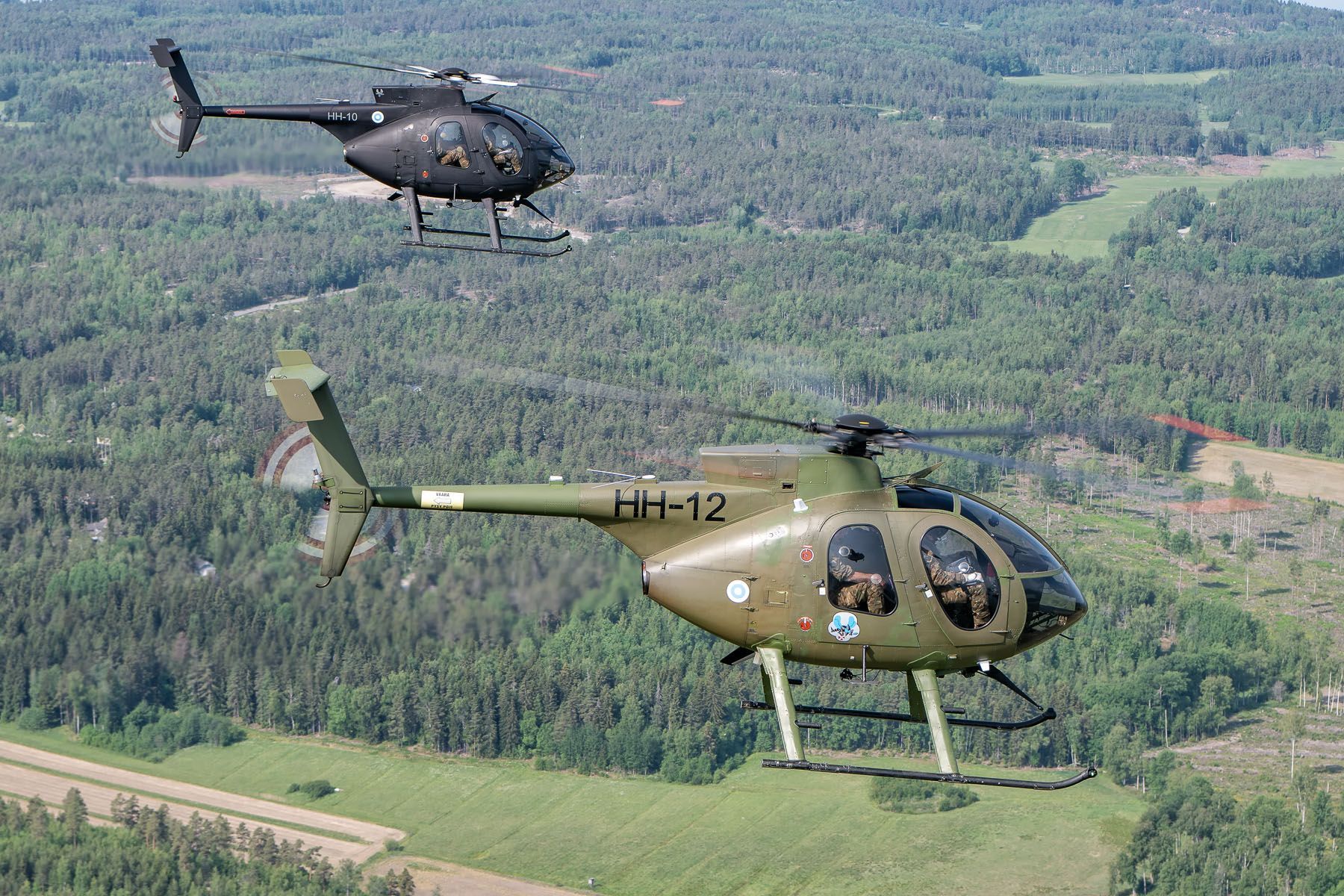
Rotary wing flying training
Looking at the Battalion’s MD 500s, their roles are less diverse compared to the NH90, but still important as these are mainly used for training.
Future helicopter pilots start their education at the Ilmasotakoulu, the Air Force Academy, in Tikkakoski. Here they will attend the Air Pilot Reserve Officer Course, and follow the basic flying training phase on the air force’s Grob G115E. After graduation, initial rotary wing flight training is done in-house at Utti, using a syllabus that centres on the MD 500. At a later stage, a conversion course on the NH90 – also at Utti – is conducted. Some of the Battalion’s pilots are qualified to fly both, however the majority is rated single type only.
Beside training, the MD 500s are used for personnel transport as well as in support of other authorities in search operations. The light helicopters cannot be armed, although for various tactical operations these can operate with snipers.

20K safe flying hours
Looking at operators worldwide, the NH90 is not the biggest success story. Both other Nordic air arms have already decided to get rid of the helicopter. Sweden will prematurely replace their NH90 fleet, while Norway even cancelled the contract before delivery was completed, both highly frustrated with the helicopter’s availability and lack of foreseen capacity. So, how does Finland appreciate the NH90?
As mentioned earlier, deliveries were delayed and initial capabilities reduced. It has been reported that during the mid-2010s, fleet availability dipped to as low as 19 percent, mainly due to issues in the spares supply chain.
At some point however, tables were turned. According to the Helicopter Battalion, high-level helicopter maintenance expertise, years of experience and steady development of the Finnish helicopter system have guaranteed a level of operational capability and availability for the NH90, that proves satisfactory for them. In May 2022, the 20.000th flying hour mark was reached. A few months later, in August 2022, an exercise along the Baltic coast took place, hosted by the Finnish Navy. The Helicopter Battalion participated with ten NH90s that performed well, flying all at the same time alongside US Army CH-47F Chinooks and UH-60 Blackhawks, as well as US Marines Corps AH-1Z Viper and UH-1Y Venom helicopters operating from the visiting USS Kearsarge.
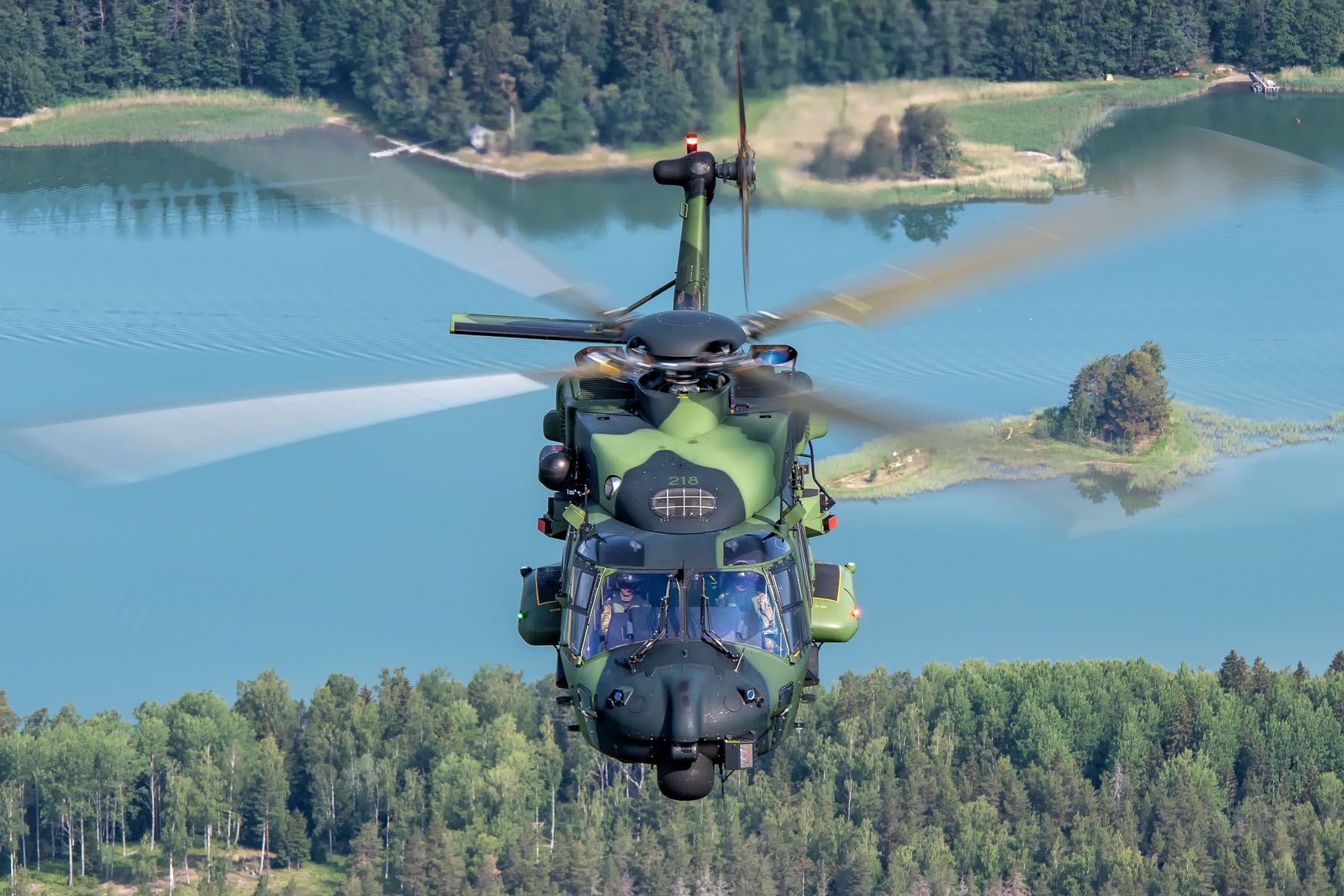
A big change, yet nothing really changes
Finland joined NATO on 4 April 2023, a move that was opposed by a Finnish majority for decades, until the Russian invasion in Ukraine in 2022 changed general opinions.
Nevertheless, as part of the Finnish Defence Forces and the Utti Jaeger Regiment, the Helicopter Battalion has for a long time developed its capability to operate jointly with both NATO and partner nations. Before joining the alliance, the Helicopter Battalion had participated in international exercises for over a decade, in which they had tightened up tactics, techniques, and procedures together with NATO members and partner nations such as Sweden. Therefore, the capability to operate jointly with their new allies and partners was already on a high level before Finland’s NATO membership became reality. Also, the Finnish Defence Forces’ helicopter activity compares very well with that of international partners.
Exercise Southern Griffin 23 that took place from 10 to 21 May 2023 soon offered a suitable check on that. The Helicopter Battalion operated together with several assets of the French Army Aviation that brought Tigre, Caracal, Cougar and Gazelle helicopters to Finland. In addition, USAF Special Operations Command U-28A Draco ISR aircraft participated.
Following the integration within NATO, no specific needs to change operating procedures or helicopter equipment were required. Also, there is no indication that the tasks of the Helicopter Battalion will clearly change. At present, the helicopters at their disposal are regarded as adequate for completing the missions set for the Helicopter Battalion.
The Finnish Defence Forces’ main task will continue to be the defence of Finland. But of course, NATO membership does affect the Finnish Defence Forces’ tasks in that they prepare for defending allied nations under the Article 5 as well. Future participation in NATO-led operations will be based on national decision-making.
So far, Finnish military helicopters have not been involved in international operations. However, 70 years after the establishment of a rotary wing unit, it is no longer unthinkable to spot a white-blue marked NH90 at any particular location, if the need arises. ■
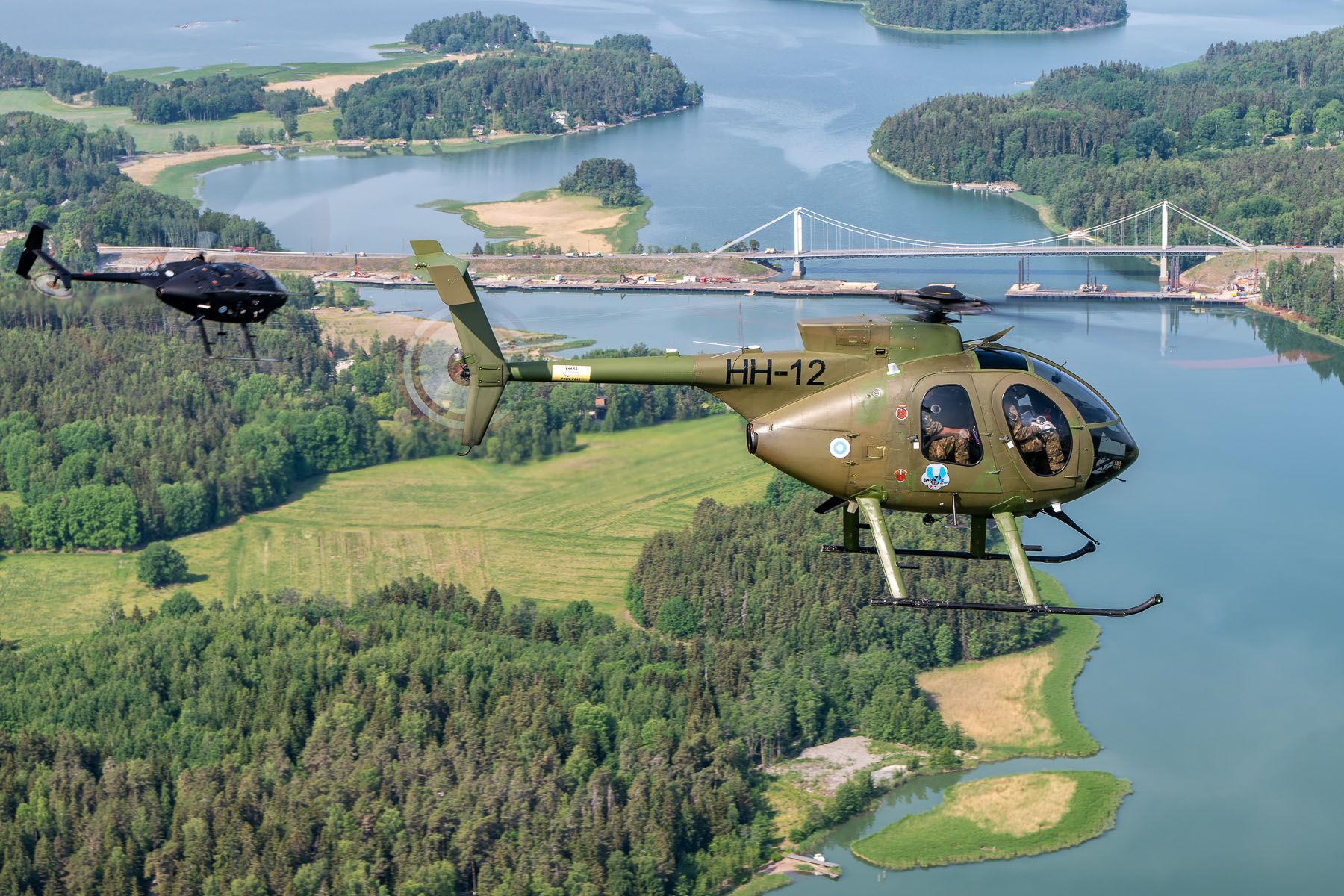
The author would like to thank Major Mikko Honkasalo and Mrs. Pia Enroos of the Utti Jaeger Regiment for their kind assistance to this report.